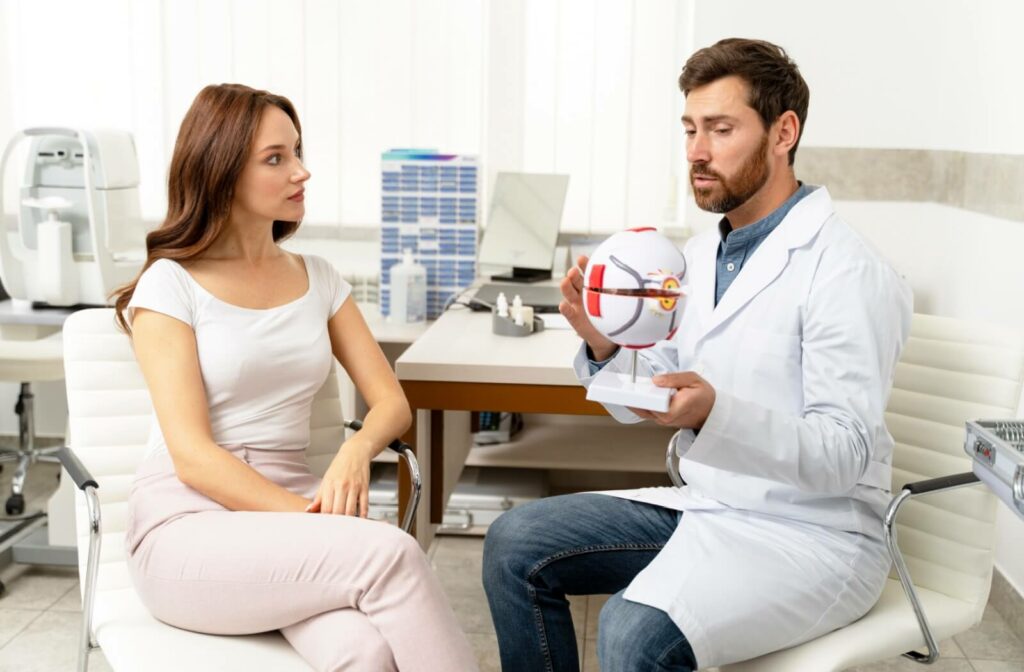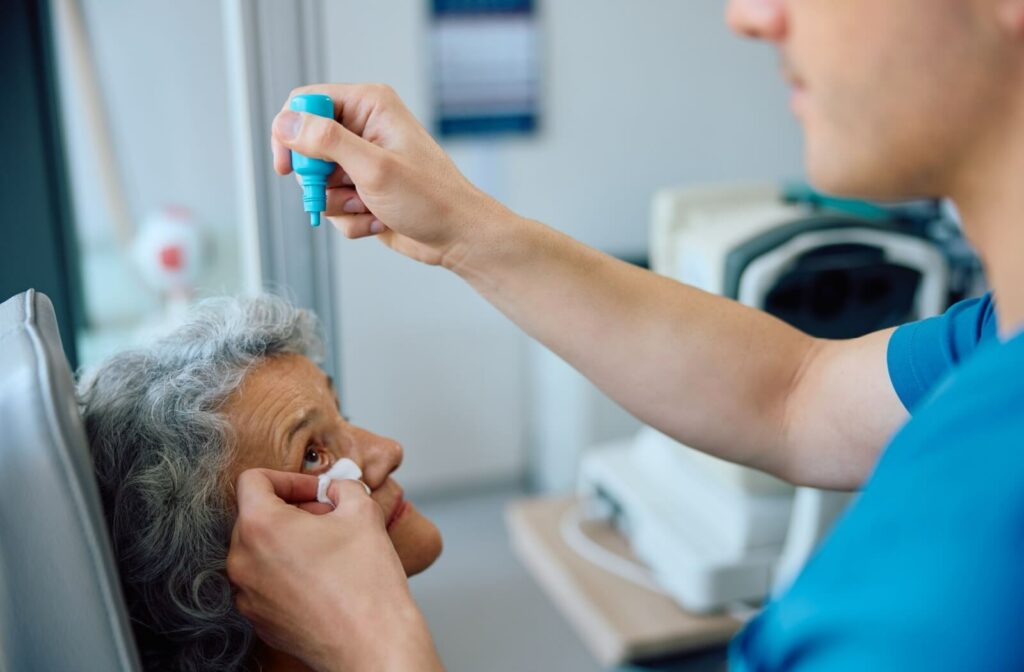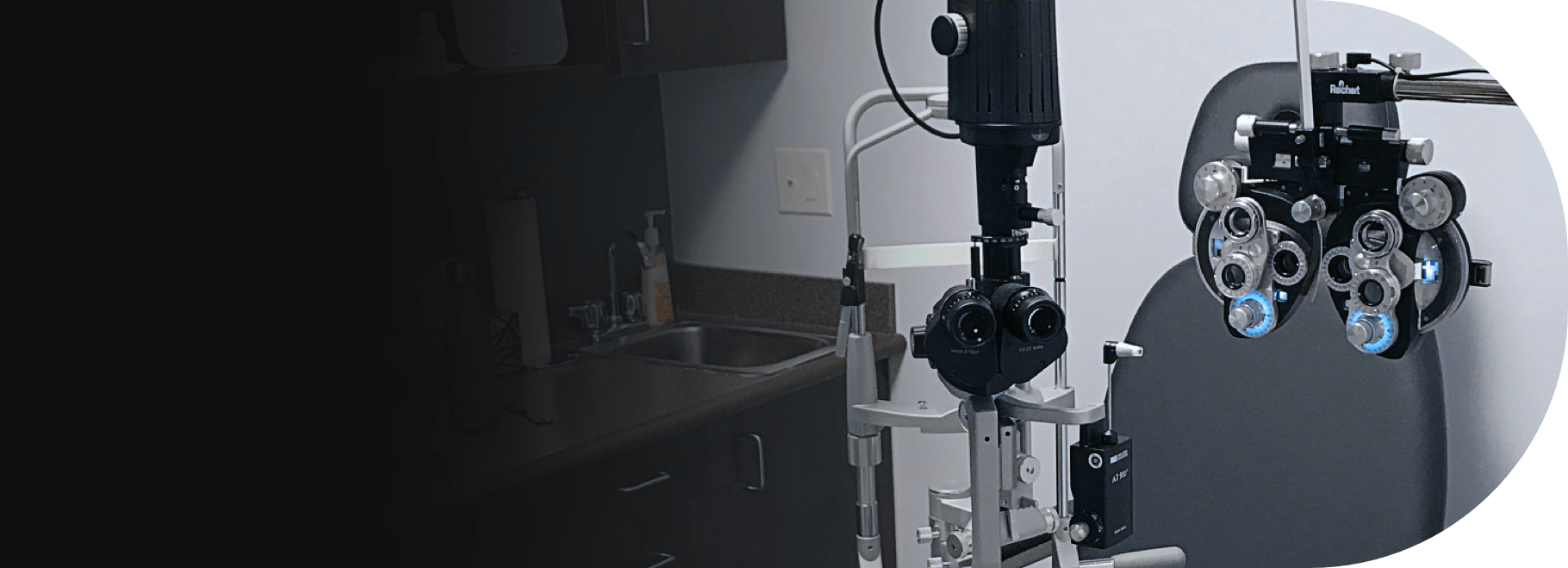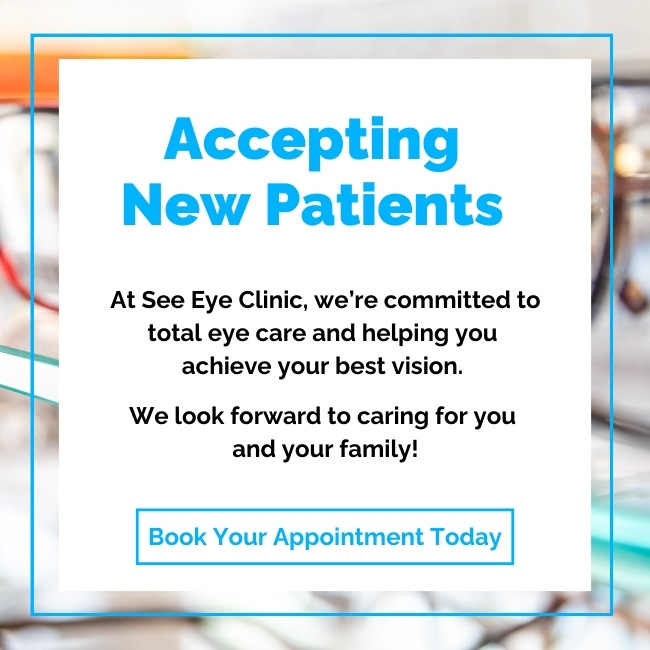When you think of eye drops, artificial tears might be the first thing to come to mind. Quick, convenient, and effective at providing instant relief, they’re a staple in most medicine cabinets, purses, or office desks. But they’re not the only eye drops that support your visual health.
A dilated eye exam, for instance, uses specialty eye drops that help reveal more detailed insights into your eye’s internal structures. It’s a relatively gentle and quick exam, but these drops do come with side effects that require special care.
Here’s what not to do after eye dilation:
- Drive
- Look at bright lights
- Engage in close-up work
- Forget your eye protection
- Touch or rub your eyes
- Intense physical activity
- Make important visual decisions
When in doubt, take it slow. Your eyes work tirelessly to support your daily adventures, so give them the care they deserve.
Why Get an Eye Dilation?
Eye dilation involves using special drops to temporarily widen your pupils. This gives your optometrist a clear view of the structures within your eyes. In an undilated eye exam—when your pupils are their normal size—your optometrist can only see a small portion of your retina and optic nerve.
A dilated eye exam provides a comprehensive view of your eye health, making it easier to detect signs of serious conditions (many of which develop without obvious symptoms), including:
- Glaucoma
- Diabetic retinopathy
- Macular degeneration
- Retinal tears or detachments
Dilation drops take roughly 15 to 30 minutes to take full effect, and the effects can last anywhere from 4 to 6 hours, or sometimes even longer. This can be inconvenient, but the health benefits of a thorough screening far outweigh the drawbacks.
What Not to Do After Eye Dilation
A dilation exam comes with a few side effects—primarily blurry vision, light sensitivity, and some difficulty focusing on objects—but these subside in about 4 to 6 hours.
In the meantime, here’s what you should avoid to keep yourself safe and your eyes comfortable:
Don’t Drive Immediately
Driving after a dilated eye exam tops the list of things to avoid, and for good reason. Your dilated pupils can’t adjust properly to changing light conditions, making it challenging to see clearly. Your depth perception and ability to focus on objects at different distances will also be compromised. Road signs, traffic lights, and other vehicles may appear blurry or unclear.
Even if you feel confident about your vision, the safety risks are simply too high. Plan ahead by arranging alternative transportation or scheduling your appointment when someone can drive you home.
Don’t Look Directly at Bright Lights
Dilated pupils mean that more light can enter your eyes, which can make normal light sources (sunshine, indoor lighting, computer screens) feel incredibly bright and uncomfortable. Direct exposure to bright lights might cause significant pain, headaches, and temporary vision problems for some people.
As you wait for your dilated pupils to return to normal, avoid looking directly at any bright light sources, including:
- Direct sunlight or reflections off surfaces
- Bright indoor lighting or lamps
- Computer, phone, or tablet screens without protection
- Headlights from oncoming traffic
- Camera flashes
Even seemingly mild light sources can cause discomfort when your pupils can’t contract normally to regulate light intake.

Don’t Engage in Close-Up Work
Reading, writing, detailed crafts, or any activity requiring fine visual focus should be avoided after dilation. This is because dilation drops affect your eye’s ability to focus on nearby objects, a process called accommodation. Text will likely appear blurry, and trying to force your eyes to focus can lead to significant eye strain and headaches.
Activities to postpone include:
- Reading books, newspapers, or documents
- Working on computers or mobile devices for extended periods
- Sewing, knitting, or detailed handwork
- Writing or drawing
Your focusing ability will gradually return as the dilation wears off, so patience is key.
Don’t Forget Eye Protection
Since your pupils remain wide open, your eyes are much more sensitive to light and potential damage from UV rays. Stepping outside without proper eye protection is not only uncomfortable but also harmful. The increased light exposure puts extra stress on your retina and other delicate eye structures.
When your eyes are dilated, UV-protective sunglasses are your best friend—they filter bright light and safeguard your eyes from the sun’s harmful rays.
Don’t Touch or Rub Your Eyes
The temptation to rub your eyes might increase because of the dilation drops, which can cause unusual sensations. However, touching or rubbing your eyes can introduce bacteria, cause irritation, or even scratch your cornea.
Your eyes may feel different (perhaps drier or more sensitive than normal), but rubbing will only make things worse. Instead, use preservative-free artificial tears to soothe your eyes. If you experience significant discomfort, contact your optometrist immediately.
Don’t Do Intense Physical Activities
Moving your body is fantastic, but it’s good to take it slow once in a while. You should avoid strenuous physical activity, such as jogging, lifting weights, or playing sports for at least a few hours post-dilation.
Increased blood flow and sweating may irritate your already sensitive eyes, and blurry vision can make it challenging to gauge distances or movements, potentially leading to accidents.
Don’t Make Important Visual Decisions
This might seem obvious, but it’s worth emphasizing: don’t make decisions that rely heavily on your vision while your eyes are dilated. This includes choosing new eyeglasses, evaluating colours for home decorating projects, or making detailed visual assessments for work projects.
Your colour perception, contrast sensitivity, and overall visual acuity are temporarily compromised. What looks acceptable or appealing during dilation might look completely different once your normal vision returns.
Keep Your Eyes Comfortable
Dilated eye exams require a bit more care and handling than your standard eye exam, but it’s an investment worth making for your overall visual health. Make it easy on your eyes by following these guidelines, and your pupils will feel normal in no time.
Remember that everyone’s experience with eye dilation is slightly different. When in doubt, connect with our See Eye Clinic team, and we can guide you through a smooth recovery. Don’t delay—book your routine eye exam today!




















